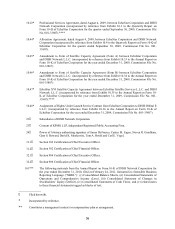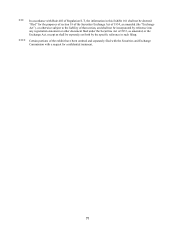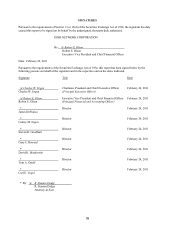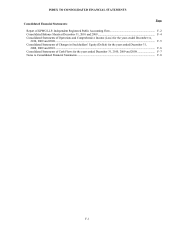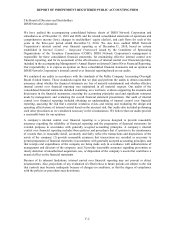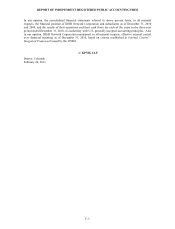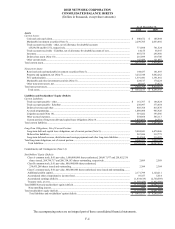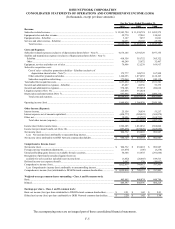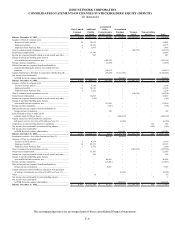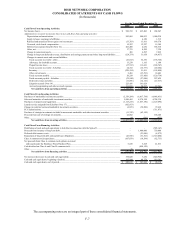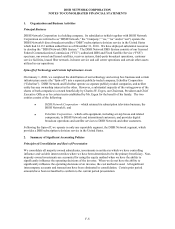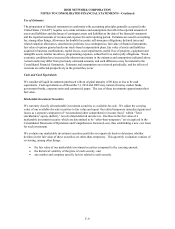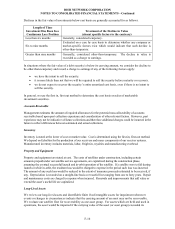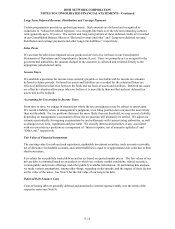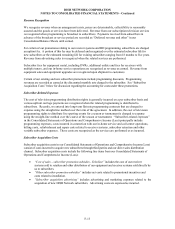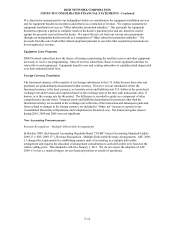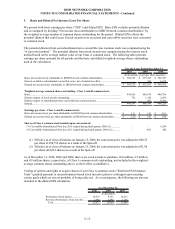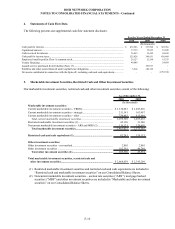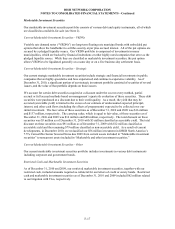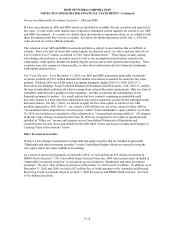Dish Network 2010 Annual Report Download - page 93
Download and view the complete annual report
Please find page 93 of the 2010 Dish Network annual report below. You can navigate through the pages in the report by either clicking on the pages listed below, or by using the keyword search tool below to find specific information within the annual report.DISH NETWORK CORPORATION
NOTES TO CONSOLIDATED FINANCIAL STATEMENTS
F-8
1. Organization and Business Activities
Principal Business
DISH Network Corporation is a holding company. Its subsidiaries (which together with DISH Network
Corporation are referred to as “DISH Network,” the “Company,” “we,” “us” and/or “our”) operate the
DISH Network® direct broadcast satellite (“DBS”) subscription television service in the United States
which had 14.133 million subscribers as of December 31, 2010. We have deployed substantial resources
to develop the “DISH Network DBS System.” The DISH Network DBS System consists of our licensed
Federal Communications Commission (“FCC”) authorized DBS and Fixed Satellite Service (“FSS”)
spectrum, our owned and leased satellites, receiver systems, third-party broadcast operations, customer
service facilities, leased fiber network, in-home service and call center operations and certain other assets
utilized in our operations.
Spin-off of Technology and Certain Infrastructure Assets
On January 1, 2008, we completed the distribution of our technology and set-top box business and certain
infrastructure assets (the “Spin-off”) into a separate publicly-traded company, EchoStar Corporation
(“EchoStar”). DISH Network and EchoStar operate as separate publicly-traded companies, and neither
entity has any ownership interest in the other. However, a substantial majority of the voting power of the
shares of both companies is owned beneficially by Charles W. Ergen, our Chairman, President and Chief
Executive Officer or by certain trusts established by Mr. Ergen for the benefit of his family. The two
entities consist of the following:
• DISH Network Corporation – which retained its subscription television business, the
DISH Network®, and
• EchoStar Corporation – which sells equipment, including set-top boxes and related
components, to DISH Network and international customers, and provides digital
broadcast operations and satellite services to DISH Network and other customers.
Following the Spin-off, we operate in only one reportable segment, the DISH Network segment, which
provides a DBS subscription television service in the United States.
2. Summary of Significant Accounting Policies
Principles of Consolidation and Basis of Presentation
We consolidate all majority owned subsidiaries, investments in entities in which we have controlling
influence and variable interest entities where we have been determined to be the primary beneficiary. Non-
majority owned investments are accounted for using the equity method when we have the ability to
significantly influence the operating decisions of the investee. When we do not have the ability to
significantly influence the operating decisions of an investee, the cost method is used. All significant
intercompany accounts and transactions have been eliminated in consolidation. Certain prior period
amounts have been reclassified to conform to the current period presentation.


